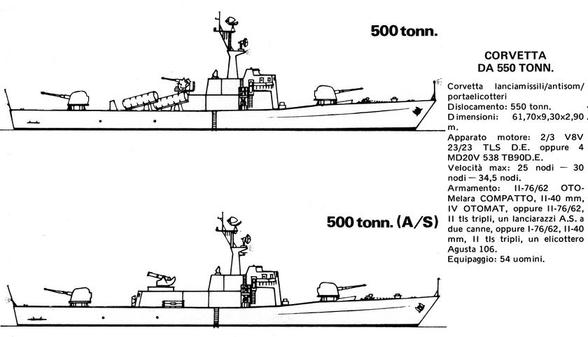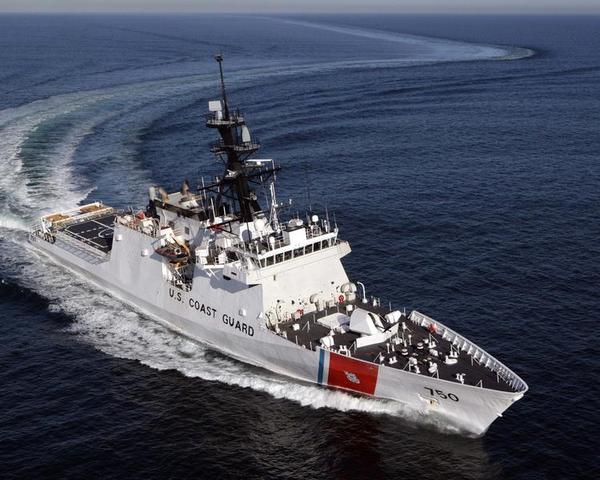February 22, 2009
This has been a point of interest on this blog off and on for some time, but the circumstances we are in and the challenges we face have both changed for the worse in the last month.
While I think the Bush administration gets a bit of a bum rap on many things, one area where they certainly did not cover themselves in glory is in the realm of military procurement, particularly on the shipbuilding front. Focused on the various awful conundrums and unpalatable choices the administration was presented with, they chose to leave the shipbuilding policies virtually rudderless in shoalwaters for 8 years, with the predictable result that the surface shipbuilding program is now on the rocks.
This is exacerbated by the fact that the US is in a rapidly deepening financial crisis. With the US having the worst January since the Panic of '96 (That's 1896 btw). Whatever optimism about a short recovery period there may have been dashed...just as we are now saddled with an ill-conceived orgy of spending that will stretch our budget terribly, the challenges facing the current administration in this area are considerable. Money is tight, so tight that the repairs to a cruiser after a recent grounding may affect the preventive maintenance of many other ships.
But wait! There's more! The development of the EMALS catapult system is reportedly in doubt this actually jeopardizes the whole carrier program right now. Other new ships are massively over budget and riddled with quality control problems. The congress wants to saddle the Navy with insanely expensive nuclear escorts that not only cannot be built in any numbers in the best of times, but are problematic from public relations and diplomatic standpoint, as they have a difficult time doing goodwill port calls as they will likely attract luddite green protesters like flies.
All this adds up to the fact that the most vexing questions facing the military may well be not what ought we to be buying...but what can we afford?
We may have to cease carrier procurement for a decade if the 25% defense budget cut desired by many in congress is passed. Hell, destroyers may be off the table too (though that is not as big an issue near term as we have quite a few first class underage units).
Minesweeping, antisubmarine warfare, inshore work, antipiracy operations as well as various subsidiary duties are currently slated to be performed by the Littoral Combat Ships. These ships are designed to be fast, and are fitted to take a mission pack dedicated to whatever mission the ship is assigned at any one time. This was intended to make them cheap enough that a large number (70+) could be bought.
Unfortunately, the new kit cost a lot to develop and the hulls, designed for speeds approaching 50 knots (!?) require very high levels of skill to manufacture. One result is that they cost 450 million apiece with the modules to provide their "teeth" still under development (all that innovative cost-savings doesn't come cheap). They are interesting vessels, not without utility, but they are probably too expensive to acquire in the numbers needed.
Those numbers are not entirely clear but they are fairly large, as all of these procurement calamities coincide with a vast expansion of the number of submarines being operated by nations more or less unfriendly to the US, plus a worldwide increase in piracy as well as an international situation which places a premium on soft power efforts such as disaster relief, "showing the flag" and operations like Continuing Promise and Pacific Partnership....the high tempo humanitarian/diplomacy operations pioneered by the Bush administration .
All of this requires a large number of ships...just as our budget is busted. With many of our vessels at the end of their lives, speed is also of the essence, so it is probably not a good idea to start designing a vessel from scratch or fitting it with groundbreaking technologies.
There seem to be two schools of though amongst navy types as to what sort of vessel we need.
One school advocates something akin to a small frigate, another, a fast attack craft 5-600 tons.
A proposal like the latter (inexplicably called Streetfighter) was the genesis of the Littoral Combat Ship, which, as mentioned, grew in both size and expense.What the FAC/Corvette advocates there fore are proposing is to do the LCS program again, but apply the lessons learned to get it right this time. The benefits perceived are as follows...
To be affordable in numbers, any vessel of this size will likely have to be given a rather more austere fit of weapons and sensors....which it is argued, should be fine for peacetime gunboat duties. If a helicopter hangar is not considered a necessity (a dubious notion IMHO) there have been numerous FAC designs from various countries over the years.
Italy in particular produced a family of light attack and patrol craft for export in the 70's and 80s of which the Ecuadoran Esmereldas , the high end of the series, is probably the most well known.
The ones presented here were never built but are included because all three are fairly austere but potentially useful.


The rather precarious helicopter deck in the third design could just as easily be filled with ISO containers full of, relief supplies,some of the minesweeping or ASW modules intended for the LCS or....hospitals.
These are all 25-30 year old designs but still give a ballpark idea of what can be done on 5-600 tons.
The problem with this is that these 5-600 ton designs seem lightly equipped in comparison with their counterparts, particularly their Ecuadoran half sisters. This line of reasoning can lead to diminishing returns.
The temptation to add "stuff" is strong. AAA missiles are nice to have and some sort of antiship punch seems silly not to include. Also, a helicopter hangar is high on the want list. This line of thought can easily bring us to what is probably the most extensively equipped FAC design right now, the French Combattante BR 70 and BR71 (article in French but also see here).

Finally, putting all these systems on a small hull is unlikely to involve any significant cost savings over a frigate sized vessel. The hull is the cheapest part of a warship. The missiles, fire control, C4I, ECM and ECCM systems all cost a lot and getting them to work on a small hull is problematic due both to having antennae mounted close together and the fact that a small hull pitches more. There are certain navies whose needs are met by such a tight design particularly if they use (like Sweden does) armored docking facilities, but for us, especially given the forced financial parsimony we face its probably better to go with a frigate sized vessel perhaps acting as a "leader"to carry helicopters and more elaborate systems.
One option is to modernize the remaining Oliver Hazzard Perry class, perhaps along the lines of the Australian's upgrade. This is potentially troublesome as the Perry's have been run very hard and likely have microcracks and other difficult to repair wear and tear. Also, the Australian upgrade has not been without problems, but at least the lessons have been learned. If an upgrade and refurbishment can be done cheaply then the vessels could have their life extended a decade or so which might get us over the financial hump. Reinstalling the MK 13 launcher would give the ability to 40 or so land attack versions of Harpoon and ESSM would take care of the AAA requirement.
As for new build frigates any such construction must have economies ferociously enforced as was done with the Perry (FFG7) class. Happily, there is actually a US design that is viewed favorably and while it has had some minor problems these have already been found out and are being fixed*. The Coast Guards National Security Cutter is extraordinarily seaworthy, reasonably fast and has very good helicopter facilities. It is lightly armed but there appears to be a space reserved for a VLS or something behind the 57mm gun....Put a VLS nest there. A 16 cell unit would look to be the maximum. That gives you 32 ESSM and 8 ASROC or 64 ESSM. As for sensors, on the high end, fit SPY1-K (an austere export version of AEGIS). Bolt on HARPOON or PENGUIN to taste.
Fit a towed array sonar in the area used for boat handling aft or modify it to a working deck for handling various mission kits and supplying the aforementioned little gunboats.
Fit as hull sonar a development of the same sets on the old FFG7's or refurbished FFG7 sets.
You then have a low end but still capable replacement for the FFG7s with more capability than they ever had.

And they'd be prettier too...even if they were grey.
Another even less expensive option for frigate/corvette sized vessels is to have the Navy involved in the design of the more austere **Offshore Patrol Cutters and, perhaps, subsidize their cost the way they did the old 110' cutters, possibly buying more than 25 of them. This might involve adding some shops and underway replenishment capability to tend smaller cutters and the modern version of the gunboats mentioned above. Pirate fighting as well as many 'short of war' activities are a good fit for the Coast Guard (as has been mentioned here before).
Having the operational replacements for the Perrys current duties manned by the USCG would free their rather large crews for less subsidiary duties and ensure that bare bones Offshore Patrol Vessels not be counted on the navy list as full frigates or destroyers as some congresscritter would be tempted to do.
There are larger systemic issues involving the expense of getting things built in US shipyards that range from the cost-plus contracting system to limited competetion. These are topics for another post, but one potential benefit of the small 5-800 ton vessels is that they might be built in many more shipyards, thereby encouraging some competition and further cost savings.
There is a lot of stuff we can't afford in the near future, but if we avoid letting the best be the enemy of the good we can likely muddle through this period without loosing to much capability.
At least I hope so....
*The 2 main issues that the cutters have had both were rather overblown and I am ashamed to admit that I fell for the hype.As I understand it now, the issues stemmed from the fact that the Coast Guard changed the requirements after construction had started. First they went to a multi crew arangement so the cutter could stay at sea much more often....which consequently increased wear and tear and reduced maintenance time. This meant that the fairly extreme 30 year lifespan might not be achievable with the original design. Subsequent cutters are being built with reinforced scantlings and the lead ship will be refitted in due course. The ship is currently sound structurally...the newer ones will be better. The other issue involves the fact that TEMPEST grade electronics were fitted to a vessel not initially designed for it. Bertolf's comm systems are as good or better than any other cutter save perhaps the ex navy PC's. Subsequent vessels will be built to TEMPEST standards. There is more on that here....money quote TEMPEST is the most overrated problem in modern defense spending history, and it isn't close... and the facts prove it.
** A post from last year on the OPC is here.
Posted by: The Brickmuppet at
01:00 AM
| Comments (2)
| Add Comment
Post contains 2176 words, total size 17 kb.
Posted by: UtahMan at Mon Mar 9 14:29:36 2009 (XvWju)
Posted by: The Brickmuppet at Tue Mar 10 20:05:53 2009 (V5zw/)
69 queries taking 0.8163 seconds, 182 records returned.
Powered by Minx 1.1.6c-pink.









